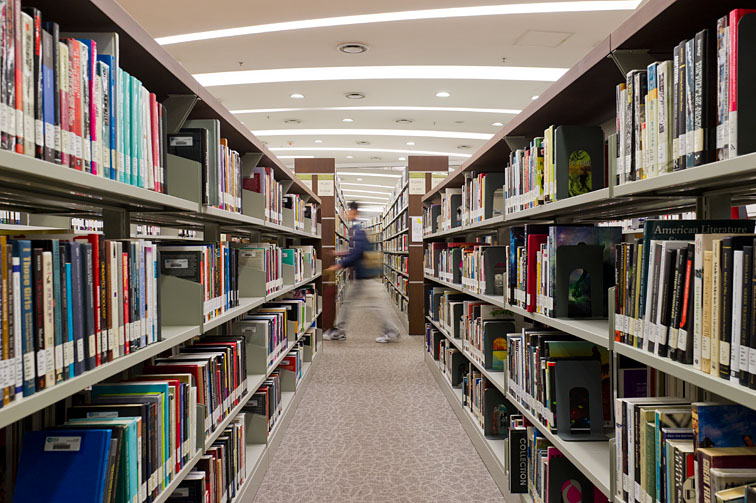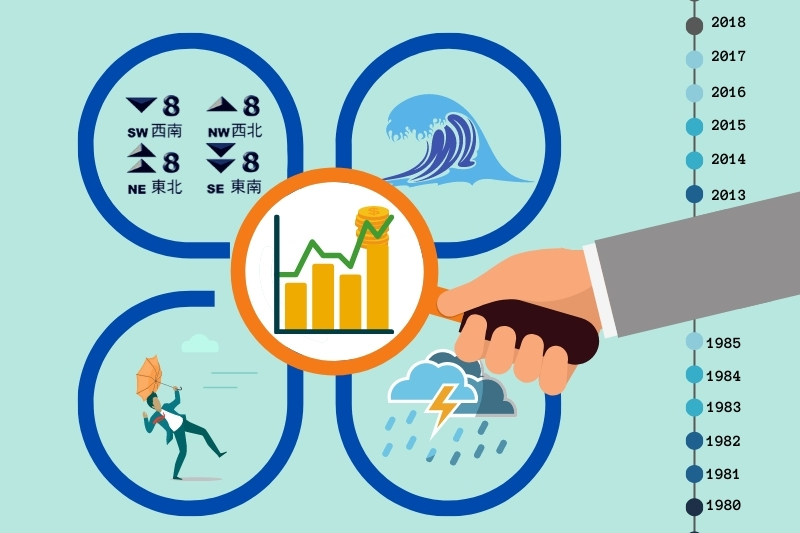
在陌生的大學校園中保存自我 (Chinese Version Only)
27 August 2021
Examining the Link between Tropical Cyclones and Local Economy
7 September 2021Language and Discourse in COVID-19 Response: The New Zealand Case

Principal investigator: Dr Christoph HAFNER (Department of English)
When there is a crisis, the ability of political leaders is tested. The COVID-19 pandemic is one of the more disruptive global problems faced by human societies in recent memory, and it is up to political leaders around the world to lead their people to counter this health crisis. Apart from making decisions that consider both public health and economic interests, leaders also need to communicate those decisions to the public. Given New Zealand (NZ) has so far been regarded as successful in fighting the pandemic, it is worth investigating whether (and how) the NZ government’s communication practices have played a role throughout the process.
This question was addressed by Dr Christoph HAFNER of CityU’s Department of English and his collaborator, Dr Tongle SUN of Chinese University of Hong Kong, who analysed video footage of NZ government press briefings from 27 January 2020 to 2 September 2020. Their findings were presented in the article The “team of 5 million”: The joint construction of leadership discourse during the COVID-19 pandemic in New Zealand, published in Discourse, Context & Media. This article highlights the way that language is used in the NZ leadership response whilst also showing how effective leadership depends not only on the speeches of leaders but also on leaders’ interactions with the media and the way that any conflict with the media is resolved.

By way of background, NZ took actions to monitor the outbreak as early as in January 2020. The country placed restrictions on foreign nationals arriving in NZ from China on 3 February 2020 and closed the borders to all but NZ citizens and permanent residents on 19 March 2020. On 25 March 2020, the entire country was placed in the highest level (level 4) of its alert system. Self-isolation and lockdown measures were enforced. In June, cases had been eliminated in the community. The second wave of infections appeared in NZ in August 2020, and it ended on 7 October 2020.
In addition to statements delivered to announce restrictions, the NZ government also provided daily briefings to the media during the first and second waves. These press briefings provided the discourse data for Hafner & Sun’s study. A total of 98 videos were collected for the study, and of these, 13 videos of press briefings involving NZ Prime Minister, Jacinda ARDERN, were selected for close analysis, targeting periods of great uncertainty, anxiety and rapid change at the beginning of NZ’s first wave in March and second wave in August.
The researchers examined how positioning, framing, metaphor, and rhetorical structure are combined in the co-constructed leadership discourse of the press briefings. They found that the most frequent discursive action in Ardern’s speeches was explaining practical issues and information plans to the public, as well as actions that are referred to as “coaching”, including giving instructions, setting goals, and explaining goals and strategies that NZers should implement. During the first wave, the metaphorical framing of the crisis as a “fight” was prominent, whereas in the second wave, “going hard and/or going early” appeared more salient. By framing the crisis as a fight, a basis for persuasive appeals to action was formed. Ardern also framed the response in terms of a collective, team action, “going hard and going early”. This metaphor of explaining a game plan has its roots in the domain of sport, which is highly valued in NZ culture and thus can evoke citizens’ sense of national pride.
In her call for a collective response to COVID-19, Ardern framed NZers as a “team of 5 million”. This phrase was first introduced in April 2020 and therefore more frequently seen in data from the second wave. This frame delivered a persuasive appeal by continuing the sports metaphor to appeal to unity, highlighting the common goals of the “team” and seeking cooperation from NZers.
As for the positioning of Ardern’s COVID-19 crisis communication discourses, a key feature is the complex combinations of reflexive positionings (of herself) to interactive positionings of the virus, the government, and NZers. In positioning herself, Ardern adopted a range of roles that allowed her to manage both transactional and relational concerns. When announcing alerts and restrictions, she took an authoritative guardian role, using phrases like “I am announcing an alert system”, “must move to close [the operations of takeaway services]”. Meanwhile, she also adopted a humanistic approach foregrounding empathy, with the consistent use of phrases like “I understand” and “I know” to build relationships, nurture trust, understanding, and respect with NZers. Another self-positioning observed is the position of “coach”. One salient coaching pattern was explaining coping strategies by providing possible negative consequences if the measures were not followed by NZers. Unsurprisingly, the coaching position was seen more frequently in the first wave, as the public had little knowledge about the pandemic early on. This demonstrates how Ardern’s crisis communication adapted to changing circumstances.
Interactive positionings of other people and things were also seen. Ardern positioned the virus as “unprecedented”, having the potential to bring about “devastating impacts” and cause “the greatest loss of NZers’ lives”. In her positioning of the NZ government, she represented the government as responsive planners and responsible, trustworthy decision makers. Expressions such as “protect(ing) NZers” and “keep(ing) you safe” were observed. As for NZers, Ardern positioned them as “creative, practical, and community-minded” in her March 2020 statement to the nation. She also positioned them as caring, kind, and cooperative.
The interactions between members of the government team and the media are interesting too. These interactions reveal that the media’s interest shifted from social distancing measures in the first wave to testing and tracing in the second wave. As a result, the focus of Ardern’s discursive actions was seen to change too. In the second wave, she was seen to refer to science and scientific sources more often. The way Ardern responded to challenges from the media also provides insights into how a leader can use language to respond to questions by aligning with the positioning and framing important to an overall call for action. For example, a common discourse pattern that Ardern employed in response to challenges was to: 1) express empathy for those affected by government measures; 2) present a negative vision of consequences that might follow if the measures were not adhered to; 3) make an appeal for collective action by all NZers to avoid possible negative consequences.
By analysing the linguistic interactions between leaders and media in press briefings, the research study shows how positioning, framing, and associated persuasive appeals played an essential role in Ardern’s leadership discourse and interactions with the media. The researchers believe that these strategies have potential for diverse contexts where leadership is done.
Achievements and publication
Hafner, C. A., & Sun, T. (2021). The ‘team of 5 million’: The joint construction of leadership discourse during the Covid-19 pandemic in New Zealand. Discourse, Context and Media, 43, [100523]. https://doi.org/10.1016/j.dcm.2021.100523
